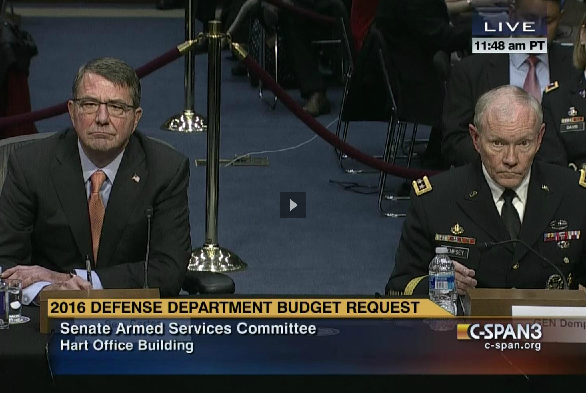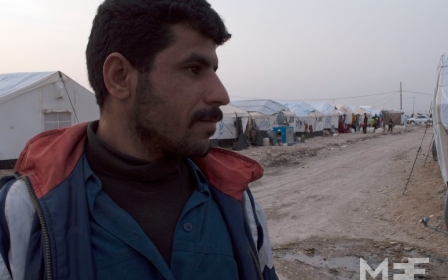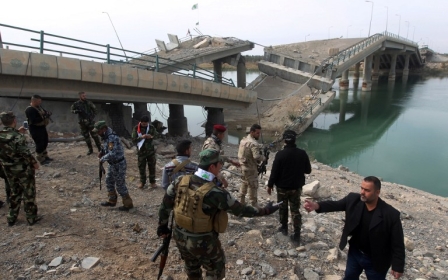Cracks in US-Iraq alliance against Islamic State

The disclosure by a US official to journalists of a forthcoming Iraqi offensive against the Islamic State group was a mistake and should not have been "blurted out", US Secretary of Defence Ashton Carter said on Tuesday.
In a background on 19 February, a US Central Command official told journalists that the Iraqi government and the US-led coalition would take action in Mosul as early as April.
An estimated 12 brigades - the equivalent of 20,000 to 22,000 troops - would take part in the operation, said the official, who spoke on condition of anonymity.
"That clearly was neither accurate information, nor had it been accurate, would it have been information that should be blurted out to the press. So it's wrong on both scores," Carter told lawmakers during a Senate Armed Service Committee hearing on the 2016 defence budget.
An investigation into the disclosure is now under investigation, the committee was told.
Several Iraqi leaders were left fuming after the leak that essentially took the element of surprise out of the planned offensive, analysts told Middle East Eye last week.
The squabble over the premature disclosure reveals tensions in the US-Iraqi alliance as the Iraqi army continues its offensive on Tikrit, an operation that has been described as a stepping stone to an assault on Mosul – and one which Iraqis launched this week without consulting the US, the New York Times has reported.
While Iran’s military assistance for Shiite militias fighting in Iraq has been a reality since at least 2004, US officials have raised some concerns about the potential for sectarianism, which became rampant during the 2003-11 Iraq war, to reignite as a result of the militias’ strength.
"Sectarianism is what brought us to the point where we are. And so I do look at it with concern," Carter said, adding that the Pentagon is closely watching developments.
Of the 30,000 troops estimated to be fighting to win back the hometown of former Iraqi leader Saddam Hussein, US General Martin Dempsey told the committee that two-thirds are believed to be members of Shiite militias.
In recent weeks, Iraqi politicians, tribal leaders and international human rights organisations have alleged that after Iraqi government forces freed the Diyala province from IS, Shia militias killed more than 70 civilians trying to flee – allegations backed up by eyewitnesses who spoke with MEE.
Iraqi military sources have told AFP that the army forces are closing in on Tikrit from three directions, targeting the towns of al-Alam and ad-Dawr in the north and south, while another unit is pushing in from the east. The plan, the sources said, was to encircle and lay siege to IS fighters in Tikrit.
The Tikrit offensive aims to take back the city seized by IS last June and has gained a symbolic importance for Shiite fighters: When IS captured the city, militants massacred an estimated 1,700 newly recruited Iraqi air force cadets, most of whom were Shiites, at the Speicher military base.
Local tribes raised concerns ahead of the offensive on Saturday after Hadi al-Ameri, minister for transportation and head of the Badr Organisation militia, urged Tikrit residents to leave their homes so that government forces could "wrap up the battle of the revenge for Speicher."
However, more than 2,000 Sunni tribal members are thought to be involved in the mission to retake the city.
According to the New York Times, Iraqi officials are increasingly resentful about US fears of the militias which have appeared to be instrumental in the push-back against IS.
“Americans consider us a militia that does not represent the government, while we are defending the country and helping the government,” Mueen al-Kadhimy, a leader in the Badr Organisation – previously known as the Badr Brigades – told the New York Times. “We are the people of Iraq.”
Reports and photos have also surfaced that show Iranian commander Qassem Suleimani coordinating Iraqi forces for the offensive in Tikrit on the front lines with Shiite militias.
“This is the most overt conduct of Iranian support in the form of artillery and other things,” Dempsey told the committee. “Frankly, it will only be a problem if it results in sectarianism.”
"If the central government of Iraq does not achieve - let's call it reconciliation, because that's probably the right word, with the Shia and the Kurds, then it does put our campaign at risk. And so, I am concerned about that," he added.
Middle East Eye propose une couverture et une analyse indépendantes et incomparables du Moyen-Orient, de l’Afrique du Nord et d’autres régions du monde. Pour en savoir plus sur la reprise de ce contenu et les frais qui s’appliquent, veuillez remplir ce formulaire [en anglais]. Pour en savoir plus sur MEE, cliquez ici [en anglais].




